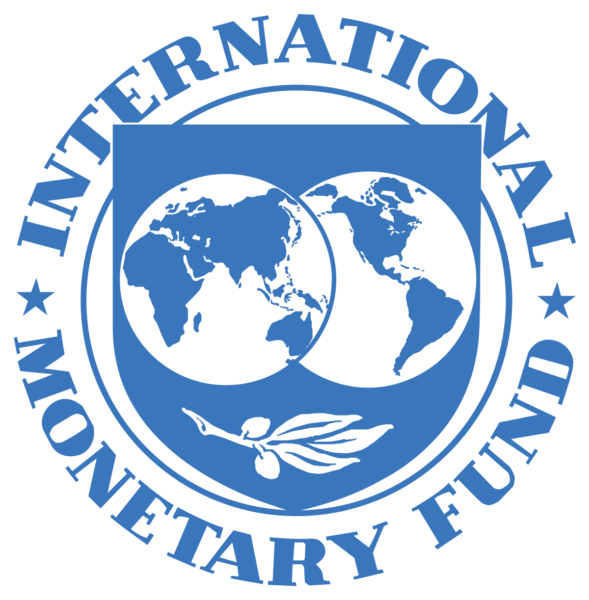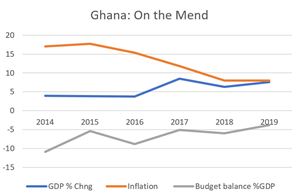What Is Imf Exchange Rate Regime
exchange rate regimeEach country is free to adopt the exchange-rate regime that it considers optimal and will do so using mostly monetary and sometimes even fiscal policies. An exchange-rate regime is the way an authority manages its currency in relation to other currencies and the foreign exchange market.
 Chapter 11 Mexico Free Floating Exchange Regime Foreign Exchange Intervention In Inflation Targeters In Latin America
Chapter 11 Mexico Free Floating Exchange Regime Foreign Exchange Intervention In Inflation Targeters In Latin America
The IMFs de jure and de facto classifications group exchange rate regimes into eight categories.

What is imf exchange rate regime. Based on exchange rate variability Levy Yayati and Sturzennegger 2005. A managed floating exchange rate means that each currencys value is affected by the economic actions of its government or central bank. Between the two limits of fixed and freely floating exchange regimes there can be several other types of regimes.
It finds that on average per capita GDP growth was slightly faster under floating regimes than under pegged. A fixed exchange rate is a regime applied by a government or central bank that ties the countrys official currency exchange rate to another countrys currency or the price of gold. The managed floating exchange rate hasnt always been used.
An exchange rate regime is the way a monetary authority of a country or currency union manages the currency in relation to other currencies and the foreign exchange market. An exchange rate regime is the system that a countrys monetary authority -generally the central bank- adopts to establish the exchange rate of its own currency against other currencies. IMF used to classify exchange rate regimes according to official government statements de jure classification Many supposedly fixed rates often adjusted Some supposedly flexible rates heavily managed De facto classifications.
Other managed arrangement US dollar as exchange rate anchor. Argentinas foreign exchange regime is broken. Argentina has been living with a floating exchange rate that succeeded in keeping the IMF-lent reserves untouched at the cost of defeating the.
The effect of nominal exchange rates on real. The difference between the exchange rate regime officially declared by central banks to the IMF de jure and the one in operation de facto has given rise to alternative methods to identify the observed exchange rate regimes. By the time of the 1999 IMF review of exchange rate regimes the received wisdom was that simple pegs were too prone to crisis and that countries should adopt either hard pegssuch as monetary unions or currency boardsor at the other end of the spectrum free floats in which the market determines a currencys value without.
The international monetary systems refers to the institutional arrangements that govern exchange rates true a country that introduces a currency board commits itself to converting its domestic currency on demand into another currency at a fixed exchange rate. The paper argues that adopting a pegged exchange rate can lead to lower inflation but also to slower growth in productivity. The Gambia Myanmar Nigeria.
Although the theoretical relationships are ambiguous evidence suggests a strong link between the choice of the exchange rate regime and economic performance. Based on exchange rate. Managed float and free float exchange rate regimes let the market play a leading role in determining the domestic currencys exchange rate with central banks intervening in foreign exchange markets to moderate exchange rate movements in the former system but sometimes at the cost of less monetary autonomy.
It is an exchange rate system under which the exchange rate fluctuation is maintained by the central bank within a range that may be specified Iceland or not specified Croatia. It is closely related to monetary policy and the two are generally dependent on many of the same factors such as economic scale and openness inflation rate elasticity of the labor market financial market development capital mobility etc. Current international exchange rates are determined by a managed floating exchange rate.
Composite exchange rate anchor. The floating category consists of managed float and independent float the latter. Exchange arrangement with no separate legal tender currency board arrangement conventional pegged arrangement pegged exchange rates within horizontal bands crawling peg crawling band managed float with no predetermined path for the exchange rate and independently floating arrangement.
3 Table 1 lists the categories of exchange rate regimes with the intermediate grouping consisting of varieties of less than very hard pegs include crawling pegs and bands. Algeria Iran Syria. The specified band may be one-sided 7 in Vietnam a narrow range 225 in Denmark or a broad range 775 in Libya.
As a reminder the classification of exchange rate systems used in Figure 1 and in my previous paper is that of the staff of the IMF based on their evaluation of the de facto exchange rate arrangement in place at the time. Pegged exchange rate within horizontal bands Composite exchange rate anchor. This is in contrast to a fixed exchange.
A floating exchange rate is a regime where the currency price of a nation is set by the forex market based on supply and demand relative to other currencies. 2 The increasing interest in assessing the functioning of exchange rates regimes stems from the fact that the empirical research based on de jure classification yield unsatisfactory results in terms of at least two issues.
Https Www Elibrary Imf Org Doc Imf071 25455 9781484375686 25455 9781484375686 Other Formats Source Pdf 25455 9781484393048 Pdf
Https Www Imf Org Media Files Publications Areaer Areaer 2017 Overview Ashx
 China Seeks To Boost Household Consumption Development Finance Economics
China Seeks To Boost Household Consumption Development Finance Economics
 How Flexible Exchange Rates Helped Latin America Adjust To Commodity Price Shocks Imf Blog
How Flexible Exchange Rates Helped Latin America Adjust To Commodity Price Shocks Imf Blog
 Determinants Of Exchange Rate Movements A Review A Guide To The Factors That Help To Explain Fluctuations In Exchange Rates Under A Floating Regime Finance Development March 1981
Determinants Of Exchange Rate Movements A Review A Guide To The Factors That Help To Explain Fluctuations In Exchange Rates Under A Floating Regime Finance Development March 1981
 Chapter 5 Monetary And Exchange Rate Policy Responses The Asean Way Sustaining Growth And Stability
Chapter 5 Monetary And Exchange Rate Policy Responses The Asean Way Sustaining Growth And Stability
Https Www Imf Org External Np Pp 2007 Eng 112707 Pdf
 The Imf And The Silent Revolution
The Imf And The Silent Revolution
 Iii Macroeconomic Balance Approach Exchange Rates And Economic Fundamentals A Framework For Analysis
Iii Macroeconomic Balance Approach Exchange Rates And Economic Fundamentals A Framework For Analysis
 Pegger Thy Neighbour Currency War Infographic Currency
Pegger Thy Neighbour Currency War Infographic Currency
 Fee Structure Cbse Igcse Daratassalam International Delhi Public School New Students Public School Tuition Fees
Fee Structure Cbse Igcse Daratassalam International Delhi Public School New Students Public School Tuition Fees
 Chapter Ii Developments And Issues In Exchange Rate Regimes Exchange Arrangements And Foreign Exchange Markets Developments And Issues
Chapter Ii Developments And Issues In Exchange Rate Regimes Exchange Arrangements And Foreign Exchange Markets Developments And Issues
 Sweeping Changes To Myanmar S Insolvency Law Regime In 2020 Regime Insolvency Myanmar
Sweeping Changes To Myanmar S Insolvency Law Regime In 2020 Regime Insolvency Myanmar
:max_bytes(150000):strip_icc()/GettyImages-887333954-38e864b25fc54149873aab27f226d327.jpg) International Monetary Fund Imf Definition
International Monetary Fund Imf Definition
 4 Special Drawing Rights Imf Financial Operations 2018
4 Special Drawing Rights Imf Financial Operations 2018
 Yuan Ization Of The World Is Under Full Steam Now Central Bank London Stock Exchange Political Development
Yuan Ization Of The World Is Under Full Steam Now Central Bank London Stock Exchange Political Development

 Criticisms Of Imf Economics Help
Criticisms Of Imf Economics Help
 Covid 19 In Emerging Markets Escaping The Monetary Policy Procyclicality Trap Vox Cepr Policy Portal
Covid 19 In Emerging Markets Escaping The Monetary Policy Procyclicality Trap Vox Cepr Policy Portal
